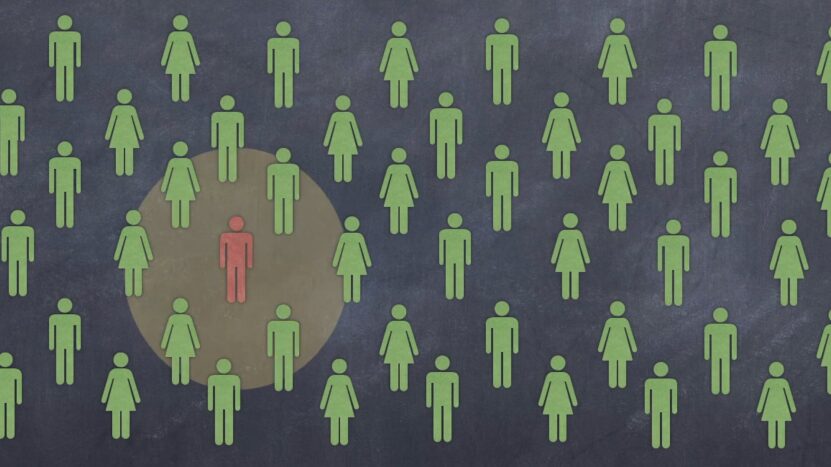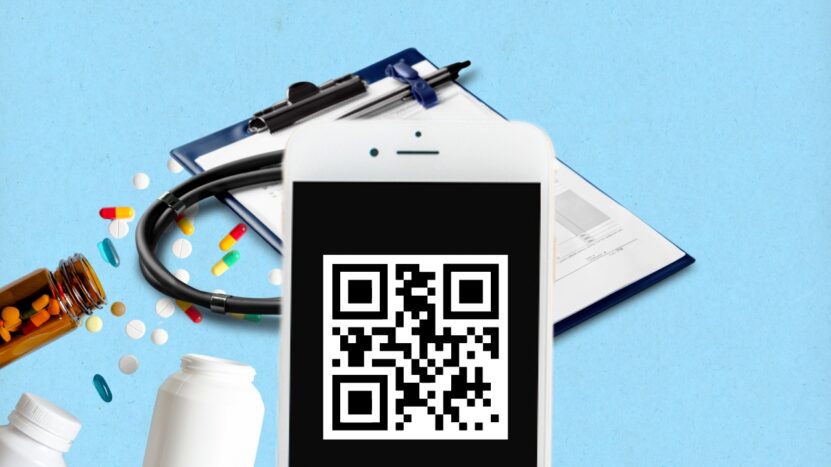In an era dominated by technological advancements, the healthcare industry is witnessing a transformative shift through the integration of QR codes. These small, square patterns of black and white may seem unassuming, but their impact on healthcare is profound.
As we delve into the world of QR codes in healthcare, we’ll explore their diverse applications, benefits, and the positive changes they bring to patient care and medical processes.
Enhancing Patient Engagement

QR codes are revolutionizing the way patients engage with their healthcare providers. Traditionally, accessing personal health information or understanding treatment plans could be cumbersome.
Patients can immediately access a vast amount of information by scanning a QR code. Whether viewing lab results, understanding prescribed medications, or accessing educational materials, QR codes empower patients to take control of their health.
They can also benefit from the added layer of security provided by QR codes when it comes to financial transactions related to healthcare. By scanning a QR code on a billing statement, they can ensure the authenticity of the payment portal, such as ERstatement.
Imagine a scenario where a patient recently diagnosed with a chronic condition receives a medication prescription. Instead of navigating through confusing written instructions, the patient can scan a QR code on the prescription label.
Instantaneously, they gain access to detailed information about the medication, including dosage instructions, potential side effects, and helpful tips for managing their condition. This fosters better understanding and promotes medication adherence, a crucial aspect of adequate healthcare.
Efficient Data Management
QR codes streamline data management processes within healthcare institutions. These codes simplify and expedite numerous tasks, from patient registration to tracking medical equipment.
When integrated into electronic health records (EHRs), QR codes reduce the likelihood of errors associated with manual data entry. Patient identification wristbands with QR codes enhance accuracy and efficiency during hospital stays, ensuring that healthcare professionals have access to the right patient’s information promptly.
Moreover, QR codes play a pivotal role in inventory management. Medical supplies, medications, and equipment can be easily tracked, reducing the risk of shortages or discrepancies. As a result, healthcare facilities can optimize their resources, enhance workflow, and provide more efficient care to patients.
Vaccine Administration and Contact Tracing

Amid global health crises like the COVID-19 pandemic, QR codes have facilitated vaccine administration and contact tracing efforts. Vaccine passports and digital certificates, often embedded with QR codes, have become crucial to verifying an individual’s vaccination status. This facilitates smoother travel and access to various public spaces while maintaining public health safety.
QR code-based contact tracing apps facilitate prompt identification and notification of individuals exposed to a contagious disease by public health authorities.
By scanning QR codes at various entry points or public spaces, individuals contribute to the collective effort of curbing the spread of infections. This technology ensures faster response times and adds an extra layer of protection for communities at large.
Empowering Healthcare Professionals
Beyond patient-centric benefits, QR codes empower healthcare professionals in their daily routines. From accessing medical research articles to updating patient records on the go, these codes streamline the information flow within the healthcare ecosystem. QR codes on medical equipment enable quick access to maintenance records and usage guidelines, facilitating timely interventions and ensuring patient safety.
Imagine a scenario where a nurse in a busy hospital is administering medication to a patient. By scanning a QR code on the medication packaging, the nurse can instantly verify the drug’s authenticity, check for any recalls or warnings, and ensure that the medication aligns with the patient’s profile and treatment plan. This enhances patient safety and minimizes the risk of medication errors.
Addressing Health Disparities

QR codes can potentially bridge gaps in healthcare access and information dissemination, especially in underserved communities. Health education materials embedded with QR codes can be distributed in various formats, including posters, brochures, and pamphlets. Remote and disadvantaged areas can access health information with smartphone scans, promoting health literacy and preventive care.
In addition, QR codes can facilitate telemedicine services, allowing individuals with limited access to healthcare facilities to consult with healthcare professionals remotely. By breaking down geographical barriers, QR codes contribute to more equitable healthcare delivery, ensuring that everyone has access to essential medical resources regardless of location.
Challenges and Considerations in QR Code Adoption for Healthcare
The integration of QR codes in healthcare holds immense promise, but it also comes with certain challenges and considerations that warrant attention. One primary concern lies in the security and privacy of patient data.
Healthcare institutions must ensure robust encryption and data protection measures to safeguard sensitive information contained within QR codes. Another challenge is the need for standardized practices and interoperable systems.
Achieving seamless integration of QR codes across diverse healthcare settings requires collaboration and adherence to common standards. Additionally, addressing technological disparities in underserved areas is crucial to ensure equitable access to QR code-enabled healthcare services. Overcoming these challenges and carefully addressing privacy concerns will be essential in realizing the full potential of QR codes in revolutionizing healthcare.
Future Innovations and Collaborations

As we celebrate the current successes of QR codes in healthcare, we must look ahead and explore future possibilities. Innovations in QR code technology, such as incorporating augmented reality or integrating with wearable devices, could further enhance patient experiences and healthcare outcomes.
Collaboration among healthcare providers, technology developers, and policymakers will play a critical role in unlocking the full potential of QR codes. Standardization of QR code usage in healthcare, along with the development of secure and interoperable systems, will ensure seamless integration across diverse healthcare settings.
Conclusion
As we navigate the ever-evolving healthcare landscape, QR codes stand out as versatile tools that enhance patient care, streamline processes, and empower patients and healthcare professionals (you can generate your customized QR codes by clicking here). From improving patient engagement to optimizing data management and contributing to public health efforts, the impact of QR codes on the healthcare industry is undeniable.
As we move forward, healthcare providers, technology developers, and policymakers must collaborate in harnessing the full potential of QR codes. By embracing this technology and exploring innovative applications, we can usher in a new era of healthcare that is efficient, patient-centric, and accessible to all. In the barcode of black and white, we find the promise of a colorful and connected future for healthcare.

